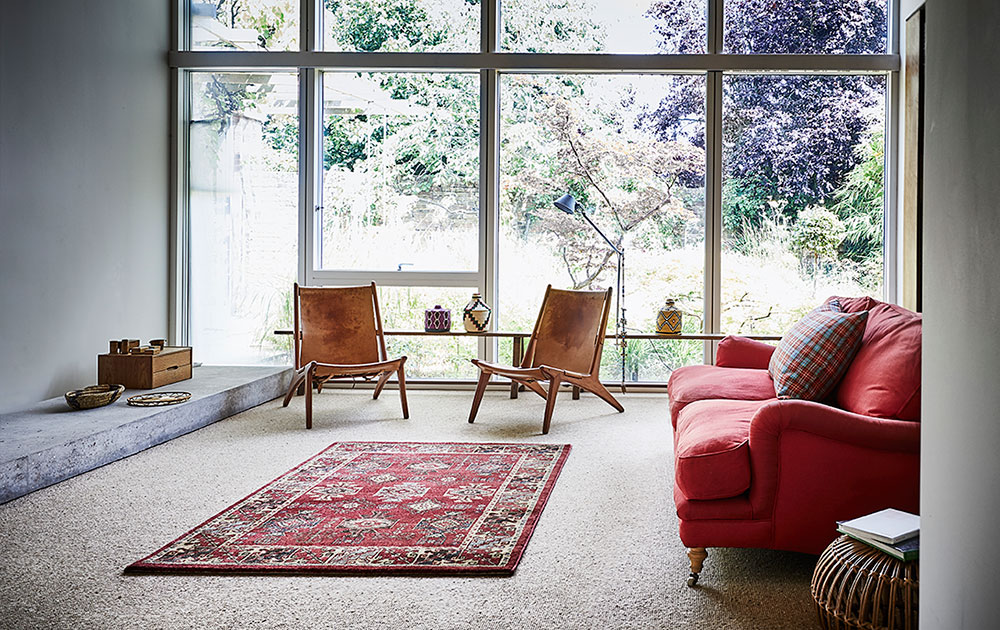The psychology of colour: How to create the perfect mood in your home
Whether you’re repainting the walls in your bedroom or sprucing up the living room with a brand new sofa, picking the right colour goes far beyond aesthetics. It’s a widely recognised fact that colour affects everything from the way we perceive objects and spaces to the way we think, feel and act1.
Colours can make cold rooms feel warmer, and small rooms seem more spacious. And when it comes to the affect colour can have on our mood, well-known phrases such as ‘green with envy’, ‘seeing red’ and ‘feeling blue’, all go to show exactly how linked colours and emotions really are.
So, while deciding on colours for your home isn’t always the easiest and most straightforward of tasks, picking the right ones can be crucial to creating the desired mood and changing the feel of a room. In fact, we recently carried out a survey that found that 39% of us in the UK think that redecorating walls, whether it be with new wallpaper or a fresh lick of paint, has the biggest impact on the look and feel of a room.
To help you on your quest to find the perfect colour, we’ve put together some colour psychology tips for you to bear in mind.
Warm colours
As the name suggests, warm colours — such as orange, yellows and reds — can make rooms feel warmer. These colours are the perfect choice for spaces that you want to feel radiant and cosy.
Red

As one of the most intense colours, red is generally associated with passion and energy
Scientific studies show that the colour red encourages conversation and stimulates appetite, making it a great choice for kitchens and dining rooms, or areas where you plan on entertaining guests.
On the other hand, red is also known to raise blood pressure and heart rate, so painting your entire bedroom this colour may create too intense an atmosphere. A red feature wall, however, could add a touch of elegance and sophistication.
Yellow
Yellow signifies energy and optimism, and studies indicate that people exposed to this colour release more serotonin — the chemical in our brain associated with happiness and well-being.
If overused, however, yellow can be overwhelming and have the opposite effect, even causing anxiety and feelings of frustration and anger.
Yellow can be a great choice for kitchens, bathrooms and poorly-lit rooms, where its uplifting and energising traits can work their magic.
Cool colours
On the opposite side of the colour wheel are cool colours — such as blues, greens and purples. Cool colours can have a calming and relaxing effect, making them the ideal choice for bedrooms.
In terms of space perception, what’s interesting about cool colours is the fact that they appear to recede, which can make rooms seem larger than they actually are. In contrast to warm colours, cool colours can make spaces feel colder, meaning these are best suited to well-lit rooms as opposed to darker, harder to heat areas.
Blue
Numerous surveys suggest that blue is by far the most popular colour in interiors. Considering the colour has been proven to slow our heart rate and lower our body temperature, relaxing and calming us, its popularity comes as little surprise.
All these attributes make it the perfect and most popular candidate for bedrooms. Blue also works really well in laundry areas and bathrooms, as it’s associated with cleanliness. If you want to go one step further, you could even paint your ceiling this colour, mimicking the colour of the sky, for a more natural feel.
Green
The colour green is, for obvious reasons, the one most connected with the natural world and the great outdoors. These qualities make it extremely soothing on the eyes, giving it calming, relaxing and invigorating characteristics.
Green enhances the aesthetics of practically every room, but it’s particularly well-suited to home offices and other work areas, as it’s been directly linked to creative thinking and concentration. With the majority of people (38%) we surveyed indicating they feel creative in the kitchen, painting this area of the home green could even boost your culinary flair!
Neutral colours
The pure neutral colours are white, black, and grey — while near-neutral colours include beige, cream and brown.
While more vibrant colours go in and out of fashion, neutral colours are timeless and have remained a popular choice through the decades — mainly due to their versatility.
Black conveys elegance and sophistication, and is best used as an accent colour, to highlight certain features. Be careful, however, as when overused, black can make rooms seem far smaller than they really are. White on the other hand, can be used to create the illusion of space, so use these colours to your advantage.
6 top takeaways
- Create the illusion of space with cool colours, and make a room feel cosier by using warm colours.
- Stimulate appetites or creativity in the kitchen with red or green palettes.
- Warm up rooms using reds, yellows and oranges; cool off using blues and greens.
- Use calming and relaxing colours in areas such as bedrooms and bathrooms.
- Don’t be afraid to use white — it will never go out of fashion.
- If you want your home to be more connected to the outside world, try and mimic the natural make-up of the great outdoors.
Remember, variety is the spice of life, so be colourful, and don’t be afraid to experiment!
If you want to play it safe and see what different colours might look like before you splash, why not try out our room visualiser tool? You can even upload pictures of your various rooms to find out what greens, reds and blues might look like!
Read more: How to make your living room more inviting
Read more: How flooring can create a beautiful rustic kitchen
1www.psychologytoday.com/blog/people-places-and-things/201504/the-surprising-effect-color-your-mind-and-mood
















